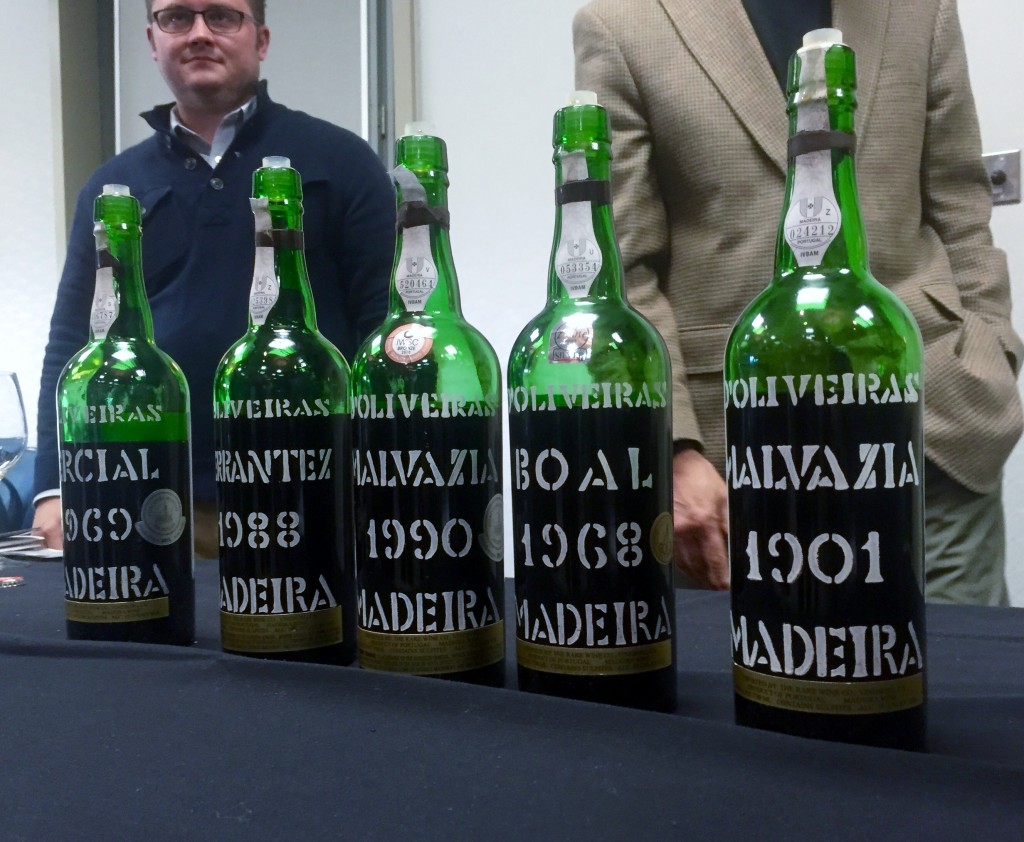Madeira: A Portuguese Classic Revisited

After 200 years, Madeira wine is making a comeback. This fortified DOC wine, produced on the namesake Portuguese archipelago 600 miles southwest of Portugal, has played a significant part in early American history. Because of a trade agreement Portugal and Britain made in the early 18th century, it became popular in colonial America, so much so that it was used to toast the signing of the Declaration of Independence. Thomas Jefferson was known to have a renowned collection of Madeira, and it was also a favorite of George Washington and Benjamin Franklin.
Due to Madeira’s unique production process, some Madeiras from this era survive and are potable to this day. The grapes, grown in the island’s acidic volcanic soil, are harvested early, then fermented until a 96% neutral vinous alcohol is added to stop the fermentation (i.e. fortification). These characteristics allow it to be matured by heating, traditionally in casks on British ships that would go through the tropics, but now most frequently via “estufagem”, which entails heating the wines in stainless steel vats for at least three months, and then letting the wine rest for another three months. The other method, “canteiro”, hues more closely to the original method, where the wine is aged in oak casks, where it undergoes oxidation and evaporation, for at least two years.
The Madeira Wine Institute held an event recently to teach people, including distributors andsommeliers from restaurants including Amada and petruce et al, about Madeira and allow them to sample a variety of styles at different ages from five producers.

Rainwater Madeiras, available only in the U.S.A., refer to a style preferred in colonial times where rain water would seep into the barrels and dilute the wine. They are younger wines that are affordable and serve as light introduction to Madeira. It’s made from the red grape Tinta Negra and is typically a medium-dry, light reddish-copper colored wine, with a carmelized sugar nose with notes of fig, and slight complexity on the palate. It can be mixed in cocktails, such as Madeira punch. This type of Madeira is also served with aged hard cheeses, autumn soups, or alone, chilled as an aperitif. It can also be used for cooking, especially if you plan to sauté mushrooms. Once open, it can remain good for a long while. Broadbent Rainwater ($15.99, 18.7%) is available at the Premium Collection store at 1218 Chestnut Street.
In addition, there are four noble grapes used for high quality Madeiras, from dry to sweet: Sercial, Verdelhoo, Boal, and Malmsey. Sercial and Verdelhoo are served chilled as apéritifs, while Boal and Malmsey are dessert wines.
Sercial typically has lemony, spicy herbaceous, almond-like aromas and is the most dry.
Verdelhoo is similar, but with a slightly richer and smokier than Sercial. It goes well with creamy soups.
Boal is significantly sweeter, with notes of roasted coffee, dates, raisins – it’s earthy, rich, and smooth, with more roundness on the palate. It pairs well with aromatic, rich cheeses and desserts containing nuts, chocolate, stewed fruit, or caramel.
Malmsey, often made with Malvasia grapes, is tawny and has incredible complexity. It’s lush and almost creamy, and has the most pronounced chocolate, fruit, and nut notes of all Madeiras. This pairs well with rich desserts (chocolate, ice cream) or cheeses.
The well-balanced Madeira is still a great way to toast an accomplishment. Even with the myriad of potent potables available today, it’s worth seeking out for those interested in the intersection of drinking and Philadelphia’s history or those who want to experience some different, but timeless wine. Whether splitting a bottle with friends or trying some at a restaurant with family, Madeira should be a organoleptic delight.
-Richard Stark


